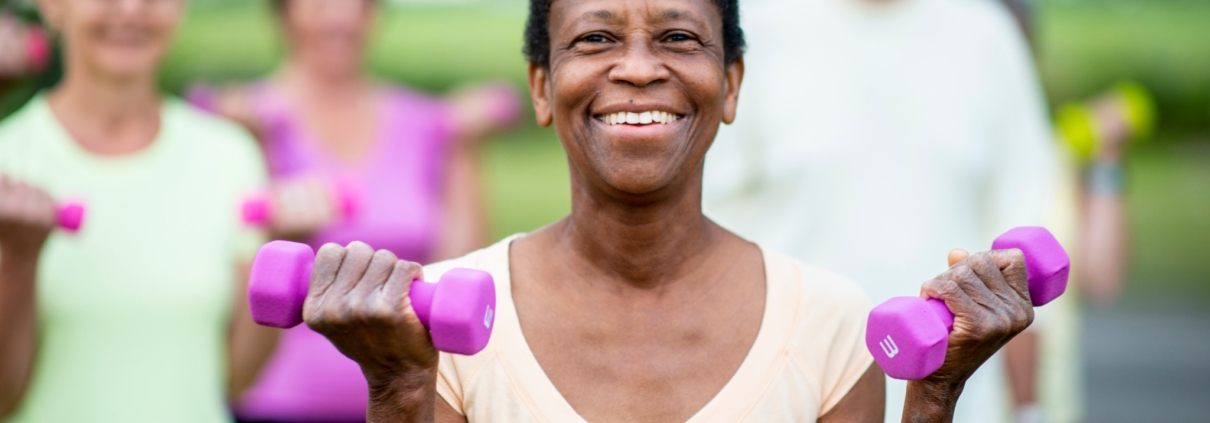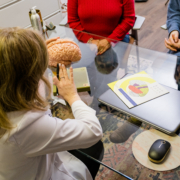Exercise Can Help Delay Dementia
Physical activity is one of the best ways to lower your risk of dementia, a condition that is increasing in the U.S. The number of people with dementia is expected to double by the year 2060, according to a January 2025 study in Nature Medicine. Right now, nearly 7 million people in the U.S. have Alzheimer’s disease or other types of dementia, according to the Alzheimer’s Association. Alzheimer’s kills more people each year than breast cancer and prostate cancer combined.
“Dementia is a general term that simply means that thinking and memory have deteriorated to the point that it interferes with day-to-day function. Alzheimer’s disease is one type of dementia,” explained Andrew E. Budson, MD, chief of cognitive and behavioral neurology at the Harvard-affiliated Veterans Affairs Boston Healthcare System and associate director of the Boston University Alzheimer’s Disease Research Center.
There are other types of dementia, including vascular dementia (caused by strokes), Lewy body dementia and frontotemporal dementia.
Maintaining an overall healthy lifestyle can help prevent or delay dementia. This includes eating healthy (such as a Mediterranean menu of whole foods), not smoking, limiting alcohol use and reducing your risk of cardiovascular disease (diabetes, high cholesterol, high blood pressure).
It’s also important to reduce the potential for head trauma by wearing your seatbelt to minimize car crash injuries; wearing a helmet when riding your bike, skiing or taking part in other types of sports; and fall-proofing your home by getting rid of loose rugs, clutter and poor lighting, according to the Alzheimer’s Association.
But perhaps the most important area to focus on is exercise. Exercise has been studied more than other preventive methods. Endless studies show the positive power of physical activity to reduce the risk of dementia from any cause.
“One thing we’ve learned in the last couple of years is that most people who develop dementia don’t just have one cause,” Dr. Budson said. “Most people have multiple causes. They can have a little bit of plaque and tangles of Alzheimer’s disease. They also may have some mini strokes. They may have some Lewy bodies. It’s actually common for the three of those to coexist in a single person, especially if they’re in their 80s.”
Exercise improves the brain directly and indirectly. Physical activity can help grow new brain cells in the hippocampus, which is the part of the brain creating and storing memories. Indirectly, improving cardiovascular fitness also improves the brain.
How to get moving
The federal Physical Activity Guidelines for Americans recommend that adults get at least 2 hours and 30 minutes of moderate-intensity physical activity a week. Spreading the activity throughout the week is better.
Not everyone is capable of meeting these guidelines, but aiming for them can be a good goal. “We tell patients that any form of exercise that they can and are willing to do is better than nothing,” said Jane Stocks, PhD, the Florane and Jerome Rosenstone Fellow in Clinical Neuropsychology at the Mesulam Center for Cognitive Neurology and Alzheimer’s Disease at Northwestern University’s Feinberg School of Medicine in Chicago.
The more exercise, the better the results. Research has shown that there are greater benefits if you do more than 5 hours of moderate-intensity physical activity each week. The guidelines specifically recommend that adults age 65 and older also do balance training and muscle-strengthening activities.
Don’t be intimidated if you aren’t an athlete. The key is staying active throughout adulthood, as much as you are able. That could include gardening or working in your yard, cleaning your house, or taking a brisk walk around your neighborhood. Swimming is also a low-impact exercise that improves your heart health and makes you stronger. And you’ve heard this before, but it’s still true: Skip the elevator and take the stairs if you can, and park far away from a store’s entrance and walk across that large parking lot.
“What I recommend is for people to just take advantage of the exercise opportunities as they can fit them in to their busy day or busy week,” Dr. Budson said.
Even if you exercise, it’s important to move around more throughout the day. If you have a job that requires you to sit in front of a computer all day, Dr. Budson recommends you think of structural ways that encourage more movement. Set an alarm or a smartwatch to remind you to get up and stretch, take a dance break or march in place. Walk around the room during work calls. Or consider investing in a treadmill desk—or smaller options like a walking pad or a small cycling or elliptical machine that fits under your desk.
Physical activity can be combined with social activity too—good for the body, brain and mental health. “If you can find a friend or a buddy, a class or even an online group—someone to hold you accountable—as an added benefit, you can get some of that social interaction that is also really great for your brain,” Dr. Stocks said. Pairing up can also help establish a routine and make it more likely you’ll commit to the exercise.
Dr. Stocks also recommends brain exercises, such as puzzles or crosswords, to her patients. The key, though, is to change it up. “Sometimes people take that advice to mean doing the same game over and over again,” she said. “The evidence better suggests that learning a new skill, or reawakening an old one, is the most beneficial for the brain to have to learn and come up with new strategies.”
The most important message though? “Get out there and try to enjoy yourself in the process,” Dr. Stocks said. “The best form of exercise is the exercise that you’re willing to and excited to do.”









